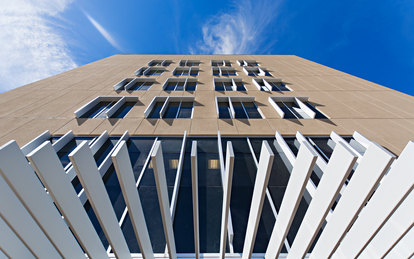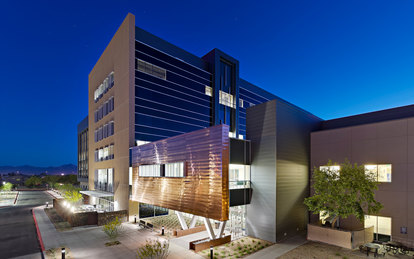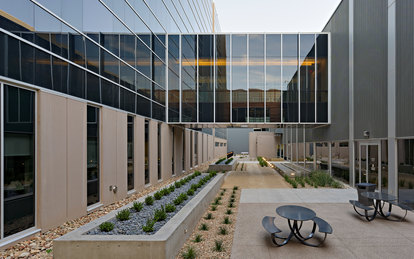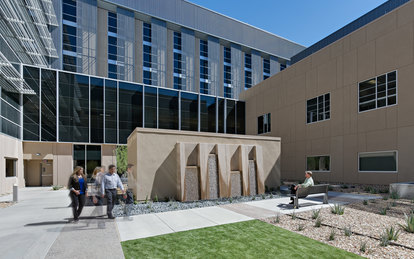Banner Estrella Medical Center Expansion
Banner Estrella Medical Center served as one of the models for the Banner Health hospital template system developed by SmithGroup. It was fitting then, that it also became the site of the first large-scale implementation of those templates when it came to expand.
Client
Banner Health
Location
Phoenix, Arizona
Markets/Services
Architecture, Building Enclosure Consulting, Campus Planning, Health, Interiors, MEP Engineering, Programming, Structural Engineering
Size
400,000 SF
Featured Awards
Best Healthcare Project, Engineering News-Record, 2014
Finalist, AZRE Red Awards, 2015
Banner Health adopted templating primarily to bring consistency to the design and operations of all of its future hospitals and clinics, including additions and renovation projects. This level of consistency allows for more efficient design and construction, more efficient operations, and reinforcement of the Banner Health brand and experience among its diverse consumers. The challenge in this project was to adapt that system to an existing campus, modifying it as needed to accommodate budgetary and spatial constraints.
Less than 10 years after opening, Banner Estrella Medical Center’s operations were near capacity, and the need for expansion was clear. Market studies indicated a need for a second nursing tower, as well as expanded cardiac and surgical capacity. The most pressing need was for a greatly expanded labor and delivery program.
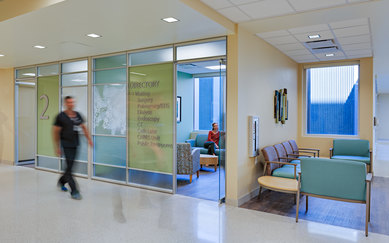
Banner Health and SmithGroup had developed a set of hospital templates, based on the Estrella model, that provided detailed floor plans to be used in the construction of new facilities. The challenge with this project was that the template assumed a scale of expansion to the diagnostic and treatment (D&T) portion of the building that was not supported by the market studies. Instead, Banner chose to place a limited amount of D&T space within the second floor of the new tower. The templated plans had to be adapted to fit within a radically revised footprint, and the assumed circulation and workflow patterns had to be re-engineered to support the new plan. Even with these major revisions, the templates proved useful, providing a solid framework on which to work.
In addition to adapting the template system, the project required reconfiguring the original master plan. Changes to the preferred patient room configuration resulted in a tower longer and larger than originally planned. The changed tower footprint required revising the placement and configuration of the parking garages.
Despite substantial site revisions, SmithGroup maintained the placement of all major entrances to both the site and the building, allowing patients and staff to continue accessing the facility along familiar routes.
